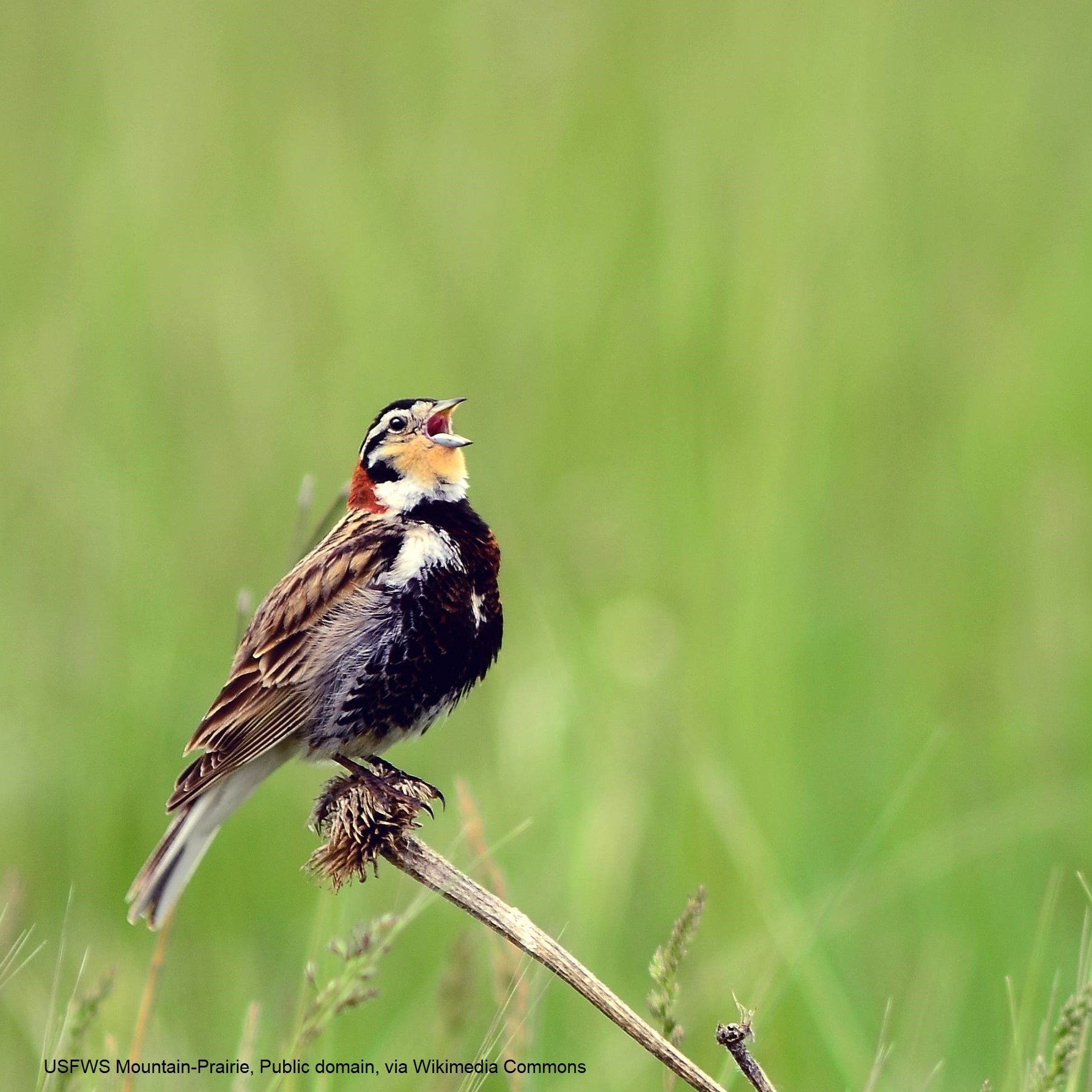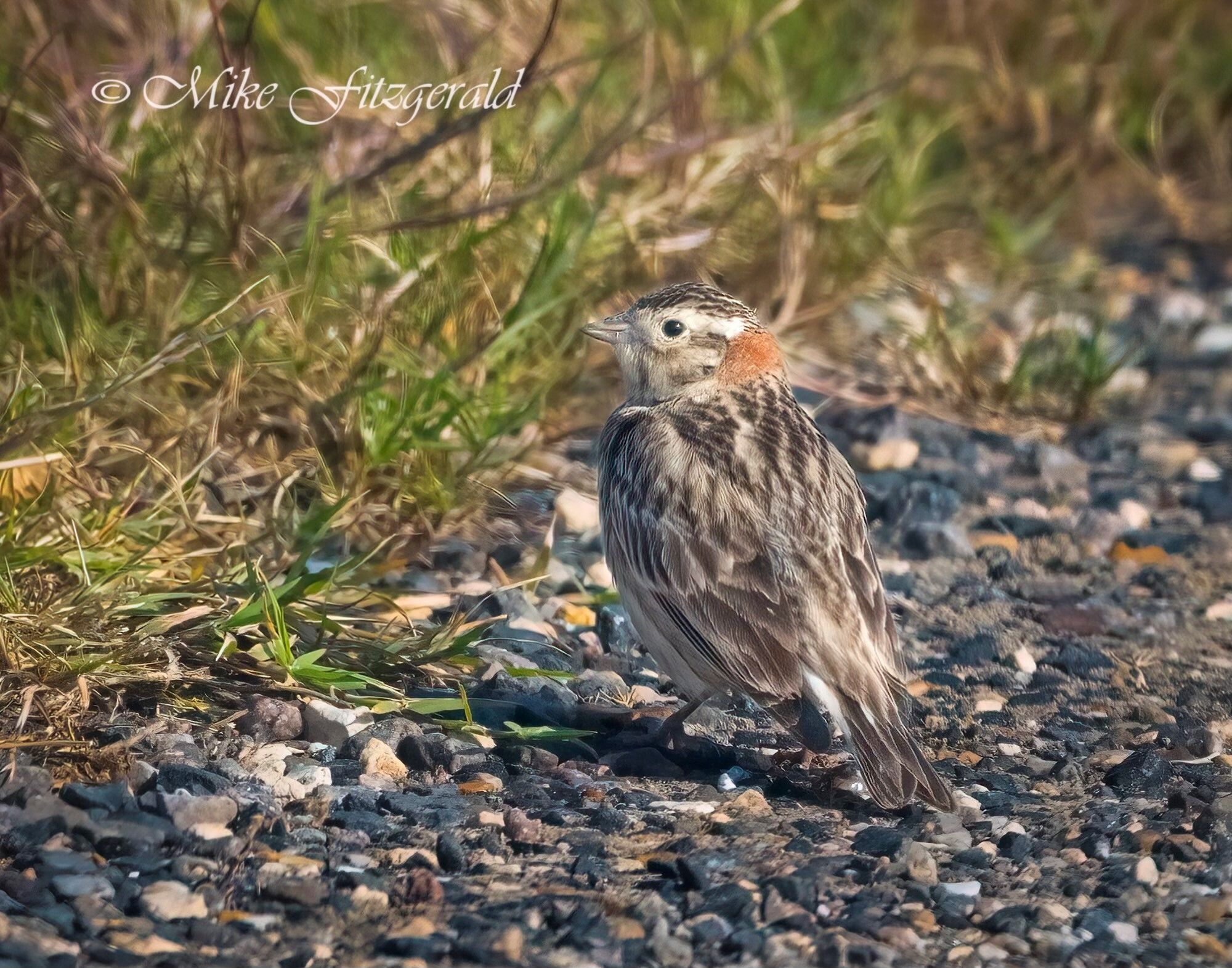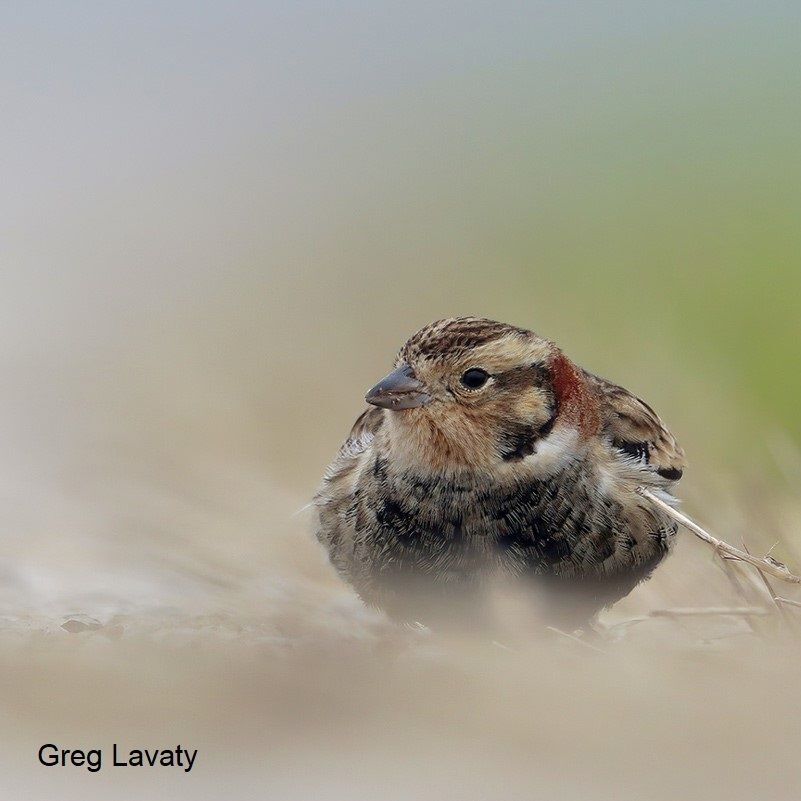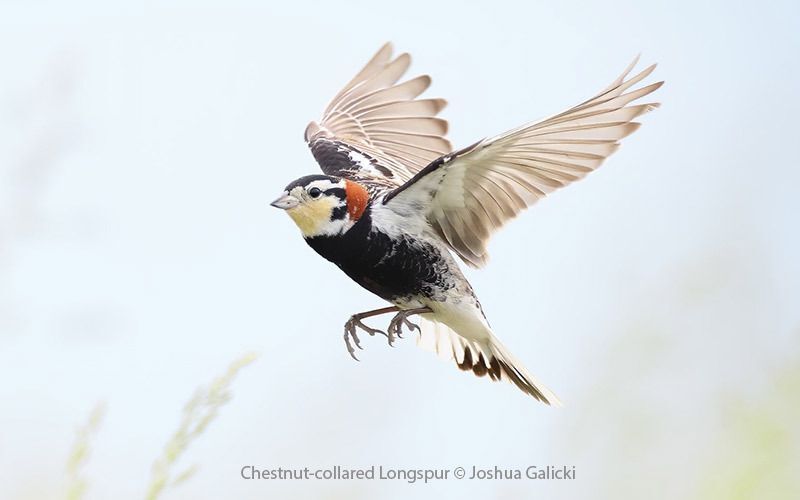Chestnut-collared Longspur
Calcarius ornatus
Family: (Calcariidae) Longspurs and Snow Buntings
Seasonal Occurrence: Uncommon in our area.
Profile by Rachel Myers: The Chestnut-collared Longspur is a common passerine of North America’s shortgrass prairies, rangelands, and desert grasslands. They are rarely seen on the Upper Texas Coast but one has shown up on the Bolivar Peninsula (April 2024)! These birds are stocky and have a stout bill. Breeding males have a black belly, yellowish throat, bold black patterning on the face, and a chestnut nape. Nonbreeding adults and immature birds are buffy overall with streaking on the back. Their underparts are grayish with blurry streaks and their faces are rather plain in this plumage.
During breeding season, Chestnut-collared Longspurs can be found in the shortgrass and mixed-grass prairies of the northern Great Plains. They have a strong preference for short grasses, so areas that have been recently grazed, mowed or burned can be good locations to find them during this time. They will of course, also use areas where the grasses stay short without grazing or other disturbances. Chestnut-collared Longspurs winter in the southern Great Plains, Chihuahuan Desert, and surrounding areas. There they use shortgrass prairies and desert grasslands. They will also use prairie dog colonies and cultivated fields.
Chestnut-collared Longspurs eat mostly insects (especially grasshoppers) and seeds. These birds spend much of their time walking quietly in grasses foraging for food. During breeding season, males will attract females with an aerial song display where they will fly up to 50 feet off the ground, circle, and descend while singing and spreading his tail. Chestnut-collared Longspurs typically have one mate at a time when breeding and nest twice every summer. These birds nest on the ground and will lay roughly 3 to 5 eggs. Breeding pairs will defend their territories from other pairs but in the winter they prefer to stay in flocks, reaching from 50 to 100 individuals.
Chestnut-collared Longspurs are medium distance migrants and will stay east of the Rocky Mountains while migrating to their wintering grounds in the southwest United States and Mexico. They breed in the Great Plains region of the United States in Montana, Wyoming, North Dakota, and South Dakota. It is rare, but Chestnut-collared Longspurs will end up on the Upper Texas Coast and one has found its way to the Bolivar Peninsula (April 20,2024)! It has been seen on Yacht Basin Road about half a mile down the road as soon as you turn in a grassy field. See if you can spot this Great Plains gem right here on the coast!
-
Cornell Lab of Ornithology
-
Bird Guide
-
Bird Library


© Mike Fitzgerald

© Greg Lavaty, www.texastargetbirds.com


